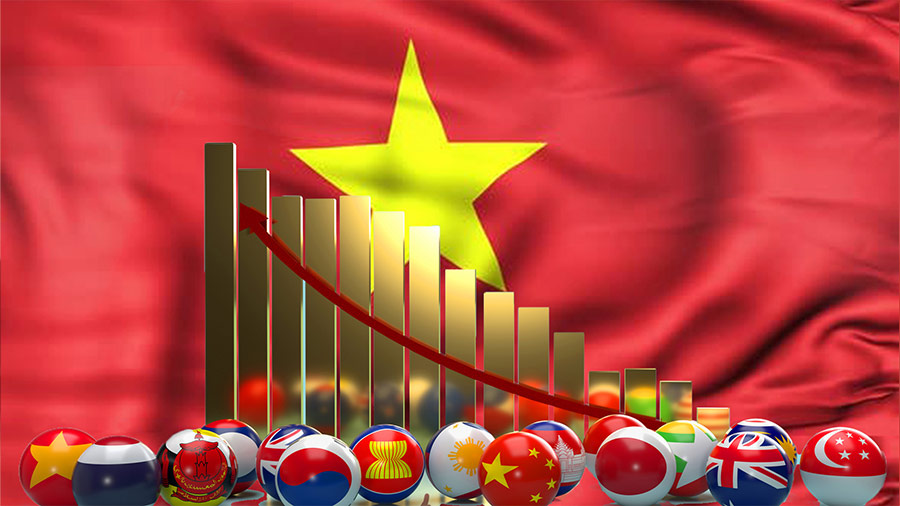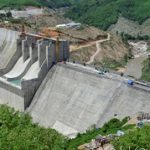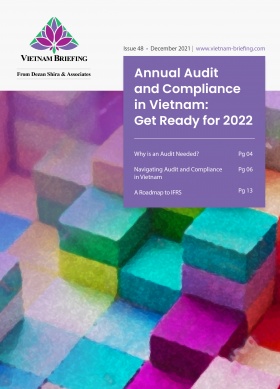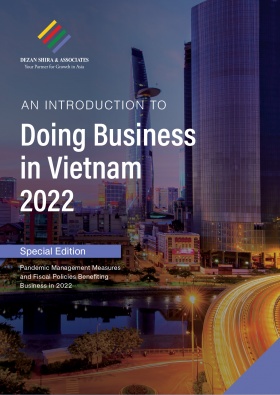Foreign Investment Flows and 2022 Trends Into Vietnam
The RCEP advantage is slow to take off in Vietnam but opportunities remain
The Regional Comprehensive Economic Partnership (RCEP) is the world’s largest free trade area and includes all ten ASEAN nations (Brunei, Cambodia, Indonesia, Laos, Malaysia, Myanmar, Philippines, Singapore, Thailand, and Vietnam) together with China, Japan, South Korea, Australia, and New Zealand. The agreement came into effect on January 1st this year, just over six weeks ago. RCEP collectively possesses a market with 30% of global GDP, and 30% of the global consumer population.
Vietnam, which suffered during Covid in 2021, saw a slight decrease in FDI into the country, realizing some US$19.74 billion over the year. That has been further compounded by closed borders and an inability for investors to travel. Outbound investment was also slow, with just one deal of note conducted by Vietnamese investors in Q4 2021, being a small stake in an ASEAN-based gaming/blockchain company.
However, from a relatively moribund 2021, there are signs that things are starting to come back to life as concerns investment into Vietnam.
Cloud Kitchens
There are over 25 of these operating in Southeast Asia already including in Indonesia and Malaysia. In October, CloudEats (Philippines) raised US$5 million in an oversubscribed Series A to help fund expansion into 2 new Southeast Asian markets including Vietnam over the next 12 months.
REITs
Mapletree Logistics Trust (Singapore) agreed to spend S$1.4 billion (US$1 billion) to acquire 17 warehouse assets spanning 1.2 million m² in China, Vietnam, and Japan. Mapletree is now present in nine Asian markets.
Vietnam Dakdrinh Hydropower
The Asian Infrastructure Investment Bank (AIIB) is funding a US$47.5 million loan (US$95 million total) involving the refinancing of the existing debt of the 125MW Dakdrinh Hydropower Plant majority-owned by PV Power. The hydropower plant has been operational since 2014. The total project cost in 2011 was VND 5,921 billion (US$280 million); partially funded by a US$178 million loan with cover from an export credit agency and a guarantee by the Government of Vietnam. The refinancing of this involves removal of the sovereign guarantee from the Government and insurance cover in support of the existing debt financing by mobilizing private capital.
At present, the investor market has been relatively slow to reach Vietnam, mainly due to Covid. However, we expect things to improve over the course of 2022, meaning there is still time to take advantage of Vietnam’s manufacturing capabilities and lower overall production costs to access the RCEP markets.
Our next Quarterly Review of Investment Flows into Vietnam will be in June. A subscription to Asia Investment Research can be obtained here.
For assistance with investment into Vietnam please contact Dezan Shira & Associates at vietnam@dezshira.com
Related Reading
About Us
Vietnam Briefing is produced by Dezan Shira & Associates. The firm assists foreign investors throughout Asia from offices across the world, including in Hanoi, Ho Chi Minh City, and Da Nang. Readers may write to vietnam@dezshira.com for more support on doing business in Vietnam.
We also maintain offices or have alliance partners assisting foreign investors in Indonesia, India, Singapore, The Philippines, Malaysia, Thailand, Italy, Germany, and the United States, in addition to practices in Bangladesh and Russia.
- Previous Article Vietnam’s Industrial Parks: Choosing the Right Location for Your Investment
- Next Article Reviving Vietnam’s Economy with Fiscal and Monetary Policies: Resolution 43




























 This article has been extracted from the February issue of Asia Investment Research, to be released on Thursday, February 17. The issue contains unique data concerning Q4 Asian inbound investment flows and includes data concerning Australia, Bangladesh, China, Hong Kong, India, Indonesia, Japan, Laos, Malaysia, Oman, Pakistan, Philippines, Singapore, South Korea, Sri Lanka, Taiwan, Thailand, Turkey, & Vietnam. To reserve your early bird a discounted copy for just US$100, please click
This article has been extracted from the February issue of Asia Investment Research, to be released on Thursday, February 17. The issue contains unique data concerning Q4 Asian inbound investment flows and includes data concerning Australia, Bangladesh, China, Hong Kong, India, Indonesia, Japan, Laos, Malaysia, Oman, Pakistan, Philippines, Singapore, South Korea, Sri Lanka, Taiwan, Thailand, Turkey, & Vietnam. To reserve your early bird a discounted copy for just US$100, please click 



